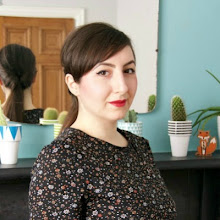Guys! Your appetite for joining in with the Vintage Sewing Pattern Pledge (#vintagepledge on Twitter) has quite literally blown me away! I announced my idea less than a month ago and there are already over 100 of you joining in! To say I'm delighted is an understatement. Not only that, but some of you have been ridiculously quick off the mark, so I'm excited to share a round-up of finished makes below.
But first, a cheeky giveaway to get even more of you on board....mwahahahahaha! Plus, I've not had a chance to fully participate in Debi's wonderful Sew Grateful Week this year, so I'm hoping this will make amends...even if I am posting it on the wrong day!
UP FOR GRABS
1940s - Simplicity 2382 - Size 16 (Bust 34" / Waist 28" / Hip 37")
1950s - Reproduction Butterick 4919 - Sizes 6-12 (Bust 30.5" - 34" / Waist 23" - 26.5" / Hip 32.5" - 36")
1960s - McCall's 6875 - Size 18 (Bust 38" / Waist 30" / Hip 40")
1970s - Style 4530 - Size 12 (Bust 34" / Waist 26.5" / Hip 36")
THE RULES ARE SIMPLE
- This giveaway is open to anyone, anywhere!
- There will be 4 winners, so just leave a comment telling me which pattern you'd most like to win -please make sure you leave leave your email address so I can get in touch.
- Enter by midnight GMT on Friday 7 March. Winners will be announced on Sunday 9 March.
- What's the catch? If you win you have to promise to make your pattern up this year, as part of #vintagepledge. Simple!
Now, let's get a load of some of your beautiful makes!
I don't know about you, but I'm all fired up again now! You can join the Vintage Sewing Pattern Pledge any time throughout 2014 and there are no set rules. You can also join in on the Twitter fun using #vintagepledge. If it's inspiration, ideas and finished projects you're craving, then check out my dedicated Pinterest Board.
See you on the #vintagepledge wagon!

























































